Test your knowledge on angles by solving the questions shown in this article. In the previous articles, we have discussed deeply the geometry of angles such as acute angle, right angle, obtuse angle, supplementary angle, and complementary angles. Students of 5th grade are advised to check out the Geometry Practice Test on Angles and solve them. With the help of these geometry practice tests, the students can know in which topic they are lagging and overcome the difficulties in them.
Do Read:
Geometry Practice Test on Angles with Answers PDF
Question 1.
Measure the below angles by using a protractor.
i. 75°
ii. 95°
iii. 110°
iv. 170°
v. 45°
Solution:
i. 75°
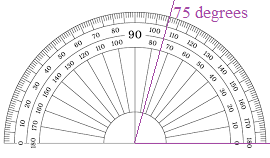
ii. 95°
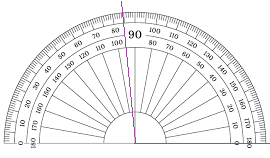
iii. 110°
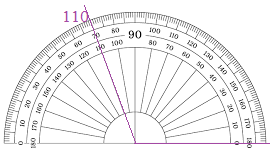
iv. 170°
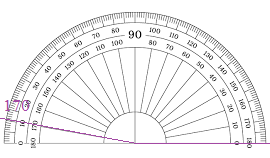
v. 35°

Question 2.
An angle whose measure is greater than 90° is called ____
Answer:
An angle whose measure is greater than 90° is called Obtuse Angle.
Question 3.
An angle whose measure is equal to 90° is known as ______
Answer:
An angle whose measure is equal to 90° is known as the Right Angle.
Question 4.
Classify the following angles
i. 55 degrees
ii. 180 degrees
iii. 35 degrees
iv. 60 degrees
v. 40 degrees
Solution:
i. 55 degrees:
An angle that is less than 90 degrees is known as the acute angle.
55° < 90°
Thus 55° is an acute angle.
ii. 180 degrees
180 degrees is a straight angle.
iii. 35 degrees
An angle that is less than 90 degrees is known as the acute angle.
35° < 90°
Thus 35° is an acute angle.
iv. 60 degrees
An angle that is less than 90 degrees is known as the acute angle.
60° < 90°
Thus 60° is an acute angle.
v. 40 degrees
An angle that is less than 90 degrees is known as the acute angle.
40° < 90°
Thus 40° is an acute angle.
Question 5.
Find the complement of the given angles.
i. 75°
ii. 89°
iii. 67°
iv. 53°
v. 71°
Solution:
i. 75°
If the sum of two angles is equal to 90° then that angle is known as the complementary angle.
90° – 75° = 15°
Thus the complement of the given angle = 15°
ii. 89°
If the sum of two angles is equal to 90° then that angle is known as the complementary angle.
90° – 89° = 1°
Thus the complement of the given angle = 1°
iii. 67°
If the sum of two angles is equal to 90° then that angle is known as the complementary angle.
90° – 67° = 23°
Thus the complement of the given angle = 23°
iv. 53°
If the sum of two angles is equal to 90° then that angle is known as the complementary angle.
90° – 53° = 37°
Thus the complement of the given angle = 37°
v. 71°
If the sum of two angles is equal to 90° then that angle is known as the complementary angle.
90° – 71° = 19°
Thus the complement of the given angle = 19°
Question 6.
Which of the following pairs are the supplementary angles.
A. 117°, 63°
B. 150°, 30°
C. 111°, 90°
D. 124°, 54°
Solution:
A. 117°, 63°
If the sum of two angles is equal to 180° then it is known as supplementary angles.
117° + 63° = 180°
B. 150°, 30°
150° + 30° = 180°
C. 111°, 90°
111° + 90° = 201°
D. 124°, 54°
124° + 54° = 178°
Thus the correct answer is option A and B.
Question 7.
Which of the following pairs are the complementary angles.
A. 17°, 63°
B. 10°, 80°
C. 11°, 70°
D. 26°, 54°
Solution:
A. 17°, 63°
17° + 63° = 80° ≠ 90°
B. 10°, 80°
10° + 80° = 90°
C. 11°, 70°
11° + 70° = 81° ≠ 90°
D. 26°, 54°
26° + 54° = 80° ≠ 90°
Thus the correct answer is option B.
Question 8.
Identify the given angle by using a protractor.
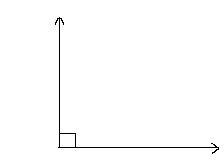
Solution:
By seeing the above figure we can say that it is a right angle. Because an angle whose measure is equal to 90 degrees is known as a Right angle.
Question 9.
Use the protractor to draw the following angles.
i. 81°
ii. 100°
iii. 60°
Solution:
i. 81°
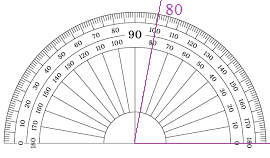
ii. 100°
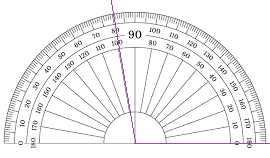
iii. 60°
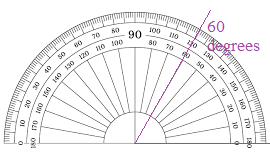
Question 10.
Find the supplementary of the given angles.
i. 115°
ii. 178°
iii. 136°
iv. 180°
v. 90°
Solution:
i. 115°
The sum of angles = 180°
180° – 115° = 65°
Thus the supplement of the given angle is 65°
ii. 178°
The sum of angles = 180°
180° – 178° = 2°
Thus the supplement of the given angle is 2°
iii. 136°
The sum of angles = 180°
180° – 136° = 44°
Thus the supplement of the given angle is 44°
iv. 180°
The sum of angles = 180°
180° – 180° = 0°
Thus the supplement of the given angle is 0°
v. 90°
The sum of angles = 180°
180° – 90° = 90°
Thus the supplement of the given angle is 90°
